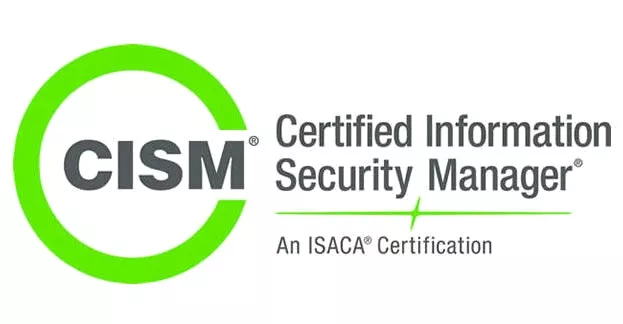Are you gearing up to conquer the ISACA Certified Information Security Manager (CISM) exam and looking to do it with the finesse of a total boss? You’re in the right place. In this comprehensive guide, we’ll navigate the path to CISM success, providing actionable insights, expert tips, and a strategic approach to ensure you ace the exam like a true professional.
Table of Contents
- Introduction
- Understanding the CISM Exam
- 2.1 Purpose
- 2.2 Content
- 2.3 Format
- 2.4 Question Types
- Crafting Your Study Plan
- 3.1 Know the Exam Objectives
- 3.2 Utilize Official ISACA Resources
- 3.3 Consider Additional Study Materials
- Mastering CISM Domains
- 4.1 Information Security Governance
- 4.2 Information Risk Management
- 4.3 Information Security Program Development and Management
- 4.4 Information Security Incident Management
- Practical Tips for Exam Day
- 5.1 Time Management
- 5.2 Read Questions Carefully
- 5.3 Prioritize Your Answers
- Leveraging Practice Exams
- 6.1 Official ISACA Practice Questions
- 6.2 Third-Party Practice Exams
- 6.3 Analyzing Your Performance
- Navigating Exam Anxiety
- 7.1 Stress Management Techniques
- 7.2 Positive Visualization
- 7.3 Pre-Exam Rituals
- FAQS for CISM Aspirants
- 8.1 What is the CISM exam?
- 8.2 How is the CISM exam structured?
- 8.3 What are the passing criteria for the CISM exam?
- 8.4 How can I register for the CISM exam?
- 8.5 How often is the CISM exam updated?
- Conclusion
1. Introduction
Embarking on the journey to attain the CISM certification is a commendable endeavor. This certification, offered by ISACA, is a testament to your expertise in information security management. Now, let’s dive into the key strategies that will help you not only pass but conquer the CISM exam with the confidence of a total boss.
2. Understanding the CISM Exam

2.1 Purpose
The CISM exam is a rigorous assessment designed to evaluate your proficiency in managing, designing, and overseeing an enterprise’s information security program. Understanding the purpose of this exam is the first step in approaching it strategically.
2.2 Content
Comprising four domains, the CISM exam covers Information Security Governance, Information Risk Management, Information Security Program Development and Management, and Information Security Incident Management. Familiarizing yourself with these domains is essential for success.
2.3 Format
The CISM exam is computer-based and consists of 150 multiple-choice questions. Knowing the format helps you tailor your study plan to the specific demands of the test.
2.4 Question Types
Questions in the CISM exam vary in complexity, testing not only your knowledge but also your ability to apply it in real-world scenarios. Being prepared for different question types is key to navigating the exam with ease.
3. Crafting Your Study Plan
3.1 Know the Exam Objectives
Start by thoroughly understanding the exam objectives outlined by ISACA. These objectives serve as your roadmap, guiding your study plan and ensuring you cover all essential topics.
3.2 Utilize Official ISACA Resources
ISACA provides official resources, including the CISM Review Manual and the CISM Questions, Answers & Explanations Database. Leveraging these materials ensures you align your preparation with the expectations of the certifying body.
3.3 Consider Additional Study Materials
While official resources are crucial, supplementing your study plan with additional materials from reputable sources enhances your understanding and exposure to diverse perspectives.
4. Mastering CISM Domains
Mastering the domains of the ISACA Certified Information Security Manager (CISM) exam is the key to navigating this certification with confidence and expertise. In this section, we will delve into each domain, providing insights and strategies to ensure you approach each one with the precision of a seasoned professional.
4.1 Information Security Governance
The Information Security Governance domain is the cornerstone of the CISM exam. It revolves around establishing and maintaining an information security governance framework and supporting processes. To master this domain:
- Understand Organizational Strategy: Align information security governance with the overall organizational strategy. This involves integrating information security policies and objectives seamlessly.
- Risk Management Integration: Integrate risk management into the governance framework. Identify, assess, and manage information security risks in a way that aligns with organizational goals.
- Legal and Regulatory Compliance: Develop a keen awareness of legal and regulatory requirements. Ensure that the information security governance framework addresses compliance issues effectively.
4.2 Information Risk Management
Mastering information risk management involves understanding the processes for risk identification, assessment, and response. Explore topics such as risk appetite, risk treatment plans, and risk communication strategies.
- Risk Identification: Develop a robust process for identifying risks. This involves recognizing potential threats to information security and assessing their impact on the organization.
- Risk Assessment: Conduct thorough risk assessments. Understand the likelihood and potential impact of identified risks to prioritize them effectively.
- Risk Response: Implement risk treatment plans. Develop strategies to mitigate, transfer, or accept risks based on the organization’s risk appetite.
4.3 Information Security Program Development and Management
This domain delves into the creation and management of an information security program. Key areas include security program development, program management and oversight, and information security metrics and reporting.
- Security Program Development: Understand the key components of developing a security program. This includes creating and maintaining information security policies, standards, and procedures.
- Program Management and Oversight: Acquire skills in program management and oversight. Ensure that the information security program aligns with organizational objectives and is effectively monitored and evaluated.
- Information Security Metrics and Reporting: Develop proficiency in measuring and reporting on information security program performance. Utilize metrics to demonstrate the program’s effectiveness and support decision-making.
4.4 Information Security Incident Management
Develop a comprehensive understanding of handling security incidents, from incident response and detection to recovery and improvement strategies. This domain is crucial for assessing your ability to manage security incidents effectively.
- Incident Response Planning: Develop and implement incident response plans. Ensure that these plans are comprehensive, addressing various types of incidents and detailing the steps to be taken during each phase of incident management.
- Detection and Response: Acquire skills in detecting and responding to security incidents promptly. This involves having mechanisms in place for early detection and a well-defined process for containing and eradicating threats.
- Recovery and Improvement: Understand the recovery phase of incident management. Learn how to assess the impact of incidents, recover systems and data, and implement improvements to prevent future occurrences.
5. Practical Tips for Exam Day
5.1 Time Management
Efficient time management is critical during the CISM exam. Allocate time wisely, ensuring you have sufficient minutes to answer each question without feeling rushed.
5.2 Read Questions Carefully
Take the time to read each question thoroughly. Pay attention to nuances, and ensure you understand what is being asked before formulating your response.
5.3 Prioritize Your Answers
If you encounter challenging questions, don’t dwell on them for too long. Mark them for review and move forward. Prioritize questions you can answer confidently to maximize your score.
6. Leveraging Practice Exams
6.1 Official ISACA Practice Questions
Practice with official ISACA questions to get a feel for the exam’s format and style. These questions offer insights into the types of scenarios you may encounter.
6.2 Third-Party Practice Exams
Supplement your preparation with third-party practice exams. Diversifying your sources helps expose you to different question structures and enhances your adaptability on exam day.
6.3 Analyzing Your Performance
Regularly analyze your performance on practice exams. Identify weak areas and revisit related study materials to strengthen your understanding.
7. Navigating Exam Anxiety
7.1 Stress Management Techniques
Implement stress management techniques, such as deep breathing or mindfulness, to stay calm and focused during the exam.
7.2 Positive Visualization
Visualize yourself successfully navigating the exam. Positive visualization can enhance your confidence and performance.
7.3 Pre-Exam Rituals
Establish pre-exam rituals to create a sense of familiarity and routine. Whether it’s a calming cup of tea or a brief walk, these rituals can help center your mind.
8. FAQS for CISM Aspirants
8.1 What is the CISM exam?
The CISM exam is a certification exam offered by ISACA, assessing the knowledge and skills of professionals in information security management.
8.2 How is the CISM exam structured?
The CISM exam consists of 150 multiple-choice questions, covering four domains related to information security management.
8.3 What are the passing criteria for the CISM exam?
ISACA does not disclose specific passing scores. However, candidates are provided with a scaled score indicating their performance level.
8.4 How can I register for the CISM exam?
Visit the official ISACA website to register for the CISM exam. Ensure you meet the eligibility requirements before initiating the registration process.
8.5 How often is the CISM exam updated?
ISACA periodically updates the CISM exam to ensure its alignment with current industry practices and technologies.
9. Conclusion
In conclusion, passing the ISACA CISM exam like a total boss requires a strategic and well-rounded approach. By understanding the exam’s purpose, crafting a meticulous study plan, mastering each domain, and leveraging practical tips and resources, you position yourself for success.
Remember, preparation is not just about absorbing information but also about developing the skills to apply that knowledge in real-world scenarios. With a proactive mindset, effective study habits, and the right resources, you can confidently navigate the CISM exam and emerge victorious, earning the coveted certification that sets you apart as a seasoned information security professional.
In conclusion, mastering the ISACA Certified Information Security Manager (CISM) exam is not merely about accumulating knowledge; it’s about adopting a strategic and holistic approach. This comprehensive guide has provided you with actionable insights, expert tips, and a roadmap to navigate the exam with the finesse of a total boss.
Understanding the purpose of the CISM exam, crafting a meticulous study plan, and delving into each domain with precision are foundational steps. Leveraging official ISACA resources, diversifying your study materials, and honing your skills through practice exams contribute to a well-rounded preparation.
On exam day, efficient time management, careful reading of questions, and prioritizing answers will be your allies. Navigating exam anxiety with stress management techniques and positive visualization will help you maintain focus and composure.
The inclusion of FAQs addresses common concerns, providing clarity on the CISM exam structure, passing criteria, registration process, and update frequency. These insights serve as valuable additions to your arsenal of knowledge.
As you embark on this journey, remember that success is not just about achieving certification but developing the expertise to excel in the dynamic field of information security. Approach the CISM exam with confidence, determination, and the knowledge that you’ve prepared like a true professional. Best of luck as you step into the realm of information security mastery – conquer the CISM exam and emerge as a total boss in the world of cybersecurity.









